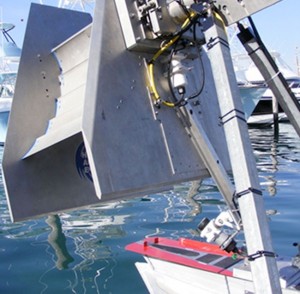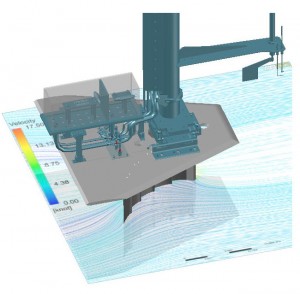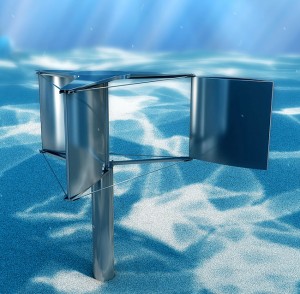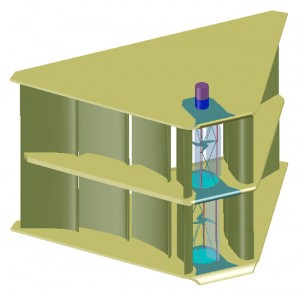After more than four years of design, development, and testing, HAE is now moving to the next level: becoming an independent provider of power (IPP) generated from ocean currents.
HAE’s Oceanus™ system offers the flexibility of utilizing various different engine turbine systems to allow for more efficient operation in different site-specific locations.
 Oceanus™ consists of two primary modules: the “shroud” and the engine module, which is housed in the shroud. But the shroud does more than simply house the engine module, it is designed to accelerate the velocity of the water flow as it passes through the engine module, thereby making it easier to extract more kinetic energy. This makes Oceanus usable in offshore locations worldwide that wouldn’t generate electricity efficiently at the pace of normal incoming water flow from the currents.
Oceanus™ consists of two primary modules: the “shroud” and the engine module, which is housed in the shroud. But the shroud does more than simply house the engine module, it is designed to accelerate the velocity of the water flow as it passes through the engine module, thereby making it easier to extract more kinetic energy. This makes Oceanus usable in offshore locations worldwide that wouldn’t generate electricity efficiently at the pace of normal incoming water flow from the currents.
Picture on the left is of an actual Shroud Correlation Test Rig upon its return from actual marine environment testing. (Click image for larger size)
The shroud has been tested both in computer simulations and real world underwater tests.
 Many computational fluid dynamic (CFD) simulations have been performed on several different variations of the shroud to confirm design characteristics, identify potential weaknesses and help engineers make design changes. These computer simulations were then used so that the optimized shroud design could be fabricated and tested multiple times in real world environments, thereby verifying the accuracy of the CFD.
Many computational fluid dynamic (CFD) simulations have been performed on several different variations of the shroud to confirm design characteristics, identify potential weaknesses and help engineers make design changes. These computer simulations were then used so that the optimized shroud design could be fabricated and tested multiple times in real world environments, thereby verifying the accuracy of the CFD.
On the left is a photo of a 3D CAD design version of a Correlation Test Rig with its computer simulation test result.
The Oceanus engine module can use various engine turbine systems.
Testing different turbine systems allows HAE to understand the most efficient operation in different site-specific locations. The Company has considered Perpendicular Access Turbines, a Gorlov turbine, a Darrieus turbine and an Axial turbine. The engine module that is ultimately used will depend on which turbine system proves most efficient. Although HAE has developed its own proprietary technology and continues to test various approaches, as an IPP the Company is focused on using whatever engine module will provide the most power at the best cost.
(Click images for larger size)
Now, HAE is about to launch its first full-scale real world test of its Oceanus system in the Indian Ocean off the east coast of South Africa.
 As explained in The Mercury newspaper of Durban, which is the major city in the eThekwini Municipality (population about 3.5 million), HAE’s Oceanus system will be the first in the South African region to harness the power of ocean currents to generate electricity. Russell Curtis, head of the Durban Promotion Agency, noted that the project will “transform” the region’s green initiative, provide electricity to the people who live there and help fuel economic development for the region while neither creating any noise or interference with sea life.
As explained in The Mercury newspaper of Durban, which is the major city in the eThekwini Municipality (population about 3.5 million), HAE’s Oceanus system will be the first in the South African region to harness the power of ocean currents to generate electricity. Russell Curtis, head of the Durban Promotion Agency, noted that the project will “transform” the region’s green initiative, provide electricity to the people who live there and help fuel economic development for the region while neither creating any noise or interference with sea life.

